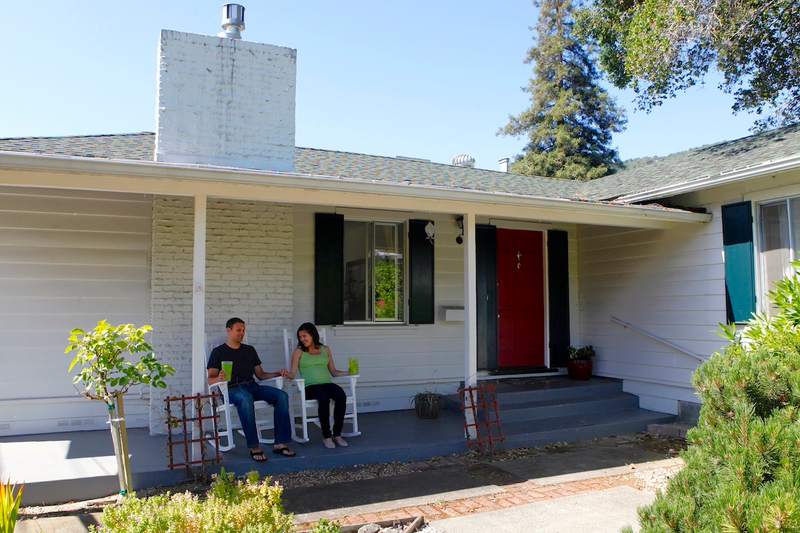Ongoing high interest rates across the economy are causing homeowners to look for solutions. Fortunately, the 5/1 adjustable-rate mortgage (ARM) offers a happy medium between flexibility and savings for your mortgage. With 5 years of a fixed, low interest rate, your savings begin accruing on day one of the loan. However, these are complicated loans that should be understood fully before they’re used. Yes, there are pros of lower interest rates and monthly payments, ideal for short-term ownership or refinancing. But there are also potentially higher rates after the initial period and a 5/1 ARM may not suit your financial situation.
What Is A 5/1 ARM?
A 5/1 ARM is an adjustable-rate mortgage with an interest rate that is fixed for the first 5 years, then adjusts once every year for the rest of the term. The “5” of the 5/1 ARM indicates how long the initial rate lasts, and the “1” indicates how often the interest rate adjusts after the initial rate expires.
See What You Qualify For
Buy A Home
Discover mortgage options that fit your unique financial needs.

Refinance
Refinance your mortgage to have more money for what matters.
Tap Into Equity
Use your home’s equity and unlock cash to achieve your goals.
How Does A 5/1 ARM Work?
A 5/1 ARM is one type of mortgage with specific boundaries and conditions. Here’s how it works:
Fixed-Rate Period
The 5/1 ARM’s initial fixed-rate period lasts 5 years. The interest rate remains the same during this period, providing you with predictable monthly mortgage payments. While this type of loan uses a 5-year period for the fixed rate, other types of ARM loans differ. For example, the 7/6 ARM’s initial rate lasts for 7 years and then adjusts every 6 months. Conversely, the 10/1 ARM gives a promotional rate for 10 years and then adjusts once annually.
Adjustment Interval
After the initial fixed-rate period ends (in this case, after 5 years), the mortgage transitions into the adjustable-rate phase. The rate adjusts annually from that point forward.
Here are examples of other ARM structures to round out your understanding.
- 5/6 ARM: In a 5/6 ARM, the fixed-interest rate period is 5 years, and the adjustment interval is 6 months, so the interest would adjust every 6 months.
- 5/2 ARM: In a 5/2 ARM, the “5” indicates a fixed-rate period of 5 years, and the adjustment interval is 2 years, so the interest rate would adjust every 2 years.
You can figure out the adjustment interval of any ARM using these guidelines.
What To Know About A 5/1 ARM Loan
Here are the factors that determine 5/1 ARM loan rates.
- Index: To determine the new interest rate, the lender uses an index, such as the Secured Overnight Financing Rate (SOFR), Cost of Funds Index (COFI) or the U.S. Treasury Bill rate. Your lender usually indicates the specific index in your loan agreement.
- Margin: The lender adds a margin (a predetermined percentage) to the index rate. For instance, if the index rate is 5% and the margin is 2%, the adjusted-interest rate would be 7%. Your loan agreement will indicate your margin rate. Lenders use either a flat percentage or your credit score and other factors to determine your margin rate. The better your credit, the lower your margin rate can be.
- Initial cap: Caps prevent the ARM’s interest rate from changing beyond a specified limit. Specifically, the initial cap controls how much the interest rate changes in the first adjustment after the initial period.
- Periodic cap: This cap limits how much the interest rate can shift from one year to the next.
- Lifetime cap: This cap controls how much the interest rate can rise during the life of the loan.
Remember, lenders typically relay information about caps through a series of numbers. For example, a 5/1 ARM with a 1/2/6 cap structure has an initial cap of 1%, a periodic cap of 2% and a lifetime cap of 6%. Therefore, the interest rate can change by a maximum of 1% after the initial period. Then, the interest rate can shift by 2% per adjustment. Finally, the interest rate can’t rise above 6% throughout the loan term.
Pros And Cons Of 5/1 ARM Loans
Evaluating the perks and drawbacks can help you decide if a 5/1 ARM fits your financial situation:
Pros
- Lower interest rates for 5 years: ARM initial rates are lower than fixed-mortgage rates. In addition, the rate doesn’t change for the first 5 years, so you’re guaranteed to pay less interest while the rate lasts. Plus, every dollar you pay toward your mortgage hits more of the principal instead of interest charges.
- Lower monthly payments: A lower interest rate means less expensive mortgage payments. As a result, your monthly housing costs are lower during the initial period.
- Short-term ownership potential: The stability and affordability of the fixed-rate period are beneficial if you plan to live in the home for less than 5 years.
- Refinancing: You can also refinance your mortgage before 5 years expires. This way, you convert to a fixed-rate mortgage and dodge the adjustment, which could raise your interest rate by multiple percentage points.
Cons
- Potentially higher interest rates after 5 years: When the interest rate adjusts, it can go up or down, depending on the market conditions. That means you run the risk of increasing rates. This could create higher monthly payments due to interest charges. For example, a half percent boost in interest for a $250,000 mortgage equals about a $100 increase in your monthly payment.
- Refinance costs: Although refinancing can keep your interest rate low after the initial period, it means paying to originate a new loan. On average, a refinance costs between 2% and 6% of the loan amount. So, it’s best to calculate how soon you’ll break even by comparing your monthly savings to the refinance expenses before committing.
- Potentially unaffordable mortgage payments with rate change: Because higher interest rates equal higher monthly payments, an ARM could price you out of your home. If you can’t afford your new payment after the initial period, you could fall behind on payments and lose your home to foreclosure.
Find out if an ARM is right for you.
See rates, requirements and beneifts.
5/1 ARM Loan FAQs
Here are answers to some frequently asked questions about 5/1 ARM loans to enhance your knowledge and ensure this mortgage type fits your financial circumstances.
How does a fixed-rate mortgage compare to a 5/1 ARM loan?
A fixed-rate mortgage offers stability with a constant interest rate and predictable monthly payments throughout the entire loan term. Therefore, it suits borrowers who value long-term payment consistency and don’t want their rates to change. The tradeoff is fixed rates are usually higher than ARM initial rates. On the other hand, a 5/1 ARM provides an initial lower interest rate for the first 5 years, but the rate adjusts annually afterward, usually leading to payment increases. This option appeals to borrowers who plan to sell or refinance before the adjustment period or want lower initial payments. Choosing between the two depends on individual preferences, financial goals and the willingness to tolerate rate fluctuations.
What’s the difference between a 5/1 ARM and a 7/1 ARM?
The primary difference between a 5/1 ARM and a 7/1 ARM is the length of the initial fixed-rate period. With a 5/1 ARM, the “5” represents the initial fixed-rate period, which lasts for 5 years. After the 5-year fixed-rate period ends, the rate adjusts annually based on market conditions for the remaining loan term. A 7/1 ARM has a fixed-rate period of 7 years, giving borrowers 2 more years to enjoy an introductory, lower interest rate.
The Bottom Line
A 5/1 ARM loan offers several advantages for borrowers. First, the initial fixed-rate period of 5 years provides lower interest rates, meaning less expensive monthly payments. As a result, these loans are ideal for short-term homeowners or borrowers planning to refinance before the adjustment period begins.
However, it’s crucial to understand the potential downsides, such as higher interest rates after the initial period ends and the possibility of unaffordable mortgage payments if rates rise significantly. It’s wise to evaluate your financial circumstances and your tolerance for rate increases when contemplating a 5/1 ARM as your home loan.
Find out if an ARM is right for you.
See rates, requirements and beneifts.

Ashley Kilroy
Ashley Kilroy is an experienced financial writer who writes for solo entrepreneurs as well as for Fortune 500 companies. She is a finance graduate of the University of Cincinnati. When Ashley isn’t helping people understand their finances, you may find her cage-diving with great whites or on safari in South Africa.












